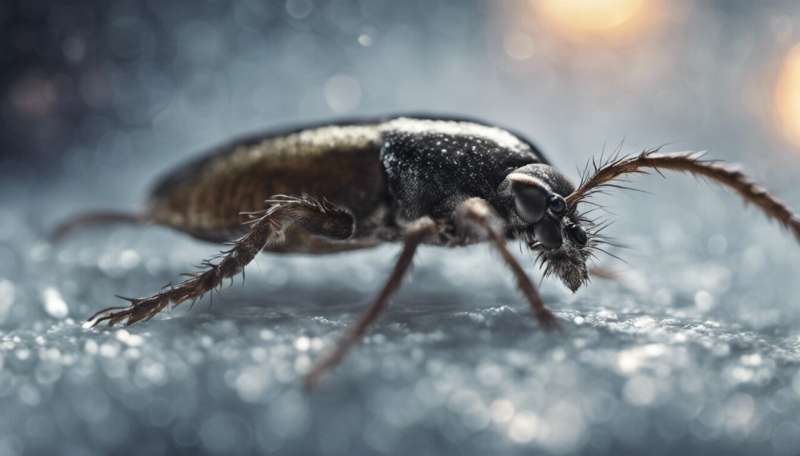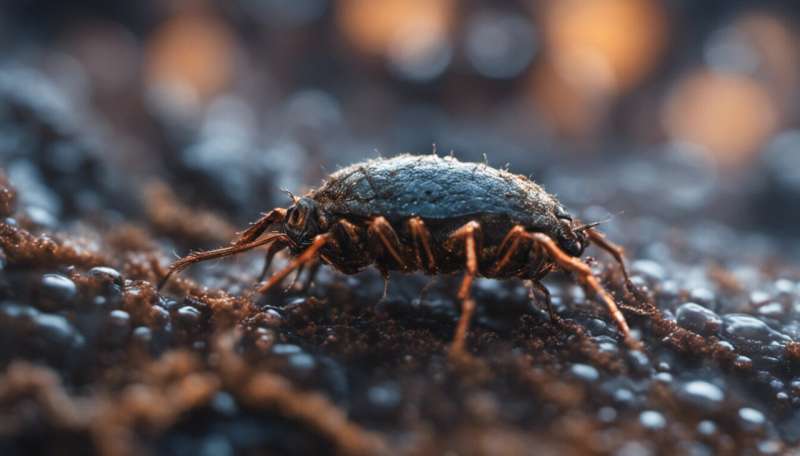This article has been reviewed according to Science X's editorial process and policies. Editors have highlighted the following attributes while ensuring the content's credibility:
fact-checked
trusted source
written by researcher(s)
proofread
A pneumonia-causing bug disappeared during the pandemic, but a surge may come this winter

After pandemic restrictions eased, cases of respiratory infections surged worldwide. There were record numbers of people infected with respiratory syncytial virus (RSV), flu and even strep A.
Yet one bacterium also known to cause respiratory infections—which typically sees a spike in cases during the winter months—has yet to see a resurgence post-COVID. It's not entirely clear why it hasn't yet re-emerged. But the latest data suggests a surge in infections may be coming this winter.
This bacterium is called Mycoplasma pneumoniae, or M pneumoniae. It typically causes a mild chest infection, but it can cause life-threatening illness, such as pneumonia and brain swelling.
As with other respiratory infections, M pneumoniae is transmitted when an infected person coughs or sneezes, creating "respiratory droplets." Other people can become infected if they inhale these droplets.
Crowded places, such as schools and hospitals, are ideal environments for the bug to spread. But unlike flu or COVID where symptoms start within days of exposure, it can take as long as three weeks before symptoms of an M pneumoniae infection start.
Symptoms in adults are similar to the flu: sore throat, fatigue, fever and headache. They can also get a cough that gets progressively worse and which may last for weeks or even months.
However, M pneumoniae infections are most common in school-aged children. Their symptoms can differ and may include sneezing, a stuffy or runny nose, wheezing, watery eyes, vomiting and diarrhea.
Because the symptoms of this infection overlap with those caused by other bacteria and viruses, the only way to know if you have an M pneumoniae infection is via a diagnostic test undertaken in a laboratory.
M pneumoniae can also cause atypical pneumonia—a milder form of pneumonia. Unlike the sort of pneumonia you might get in a hospital, it does not respond to standard antibiotic treatment. It requires a special type of antibiotic used to manage other bacterial infections such as tonsillitis and sinusitis.

Between 3% and 10% of children with an M pneumoniae infection will develop atypical pneumonia. And of those children, about 5% need treatment in a hospital.
M pneumoniae can also temporarily worsen asthma. In rare cases, it can lead to swelling of the brain, kidney dysfunction, as well as an uncommon condition called M pneumoniae-induced rash and mucositis, which causes lesions in the mouth, eyes and genital tract.
Potential resurgence
As pandemic restrictions eased, many common respiratory infections returned. This is because the interventions used to prevent COVID, such as wearing face masks and social distancing, had the knock-on effect of preventing other respiratory tract infections.
Australia, the UK and many other countries in the northern hemisphere all experienced higher than average numbers of many common infections in 2022 and 2023, including scarlet fever, flu and RSV.
But, contradicting these trends, between April 2021 and March 2022—when most other respiratory infections had made a comeback-—M pneumoniae infections remained largely absent.
The latest data shows that, globally, M pneumoniae remains absent. Data from 212,207 diagnostic tests collected from 42 sites across 23 countries identified only 214 samples positive for M pneumoniae (0.1% of the samples). By comparison, almost 9% of these samples taken pre-COVID (between 2017–2020) were positive for the bacterium.
The reasons for this lack of resurgence are not fully understood and are probably due to many factors. One possibility may relate to the fact that M pneumoniae is a relatively slow-growing organism with a long incubation time compared with many other respiratory bugs. This would mean that it would take longer to re-establish itself.
M pneumoniae infections are known to peak and trough, with epidemics occurring every four to six years as alternative variants circulate. The current and significantly prolonged low levels of M penumoniae is unlike anything seen before. But with a lack of exposure to the bacterium during the peak of the pandemic, many people may be losing immunity to the bug. Some may even lack immunity entirely. This could leave an opportunity for M pneumoniae to re-emerge, as we saw with flu, RSV and scarlet fever.
As with other respiratory infections, the best way to stop M pneumoniae from spreading is to follow good hygiene practices—such as catching coughs and sneezes in disposable tissues and regularly washing hands. Avoiding crowded areas and vulnerable people (especially if you're showing symptoms) will also help you avoid infection and prevent spreading the bacterium around as winter arrives.
This article is republished from The Conversation under a Creative Commons license. Read the original article.![]()



















